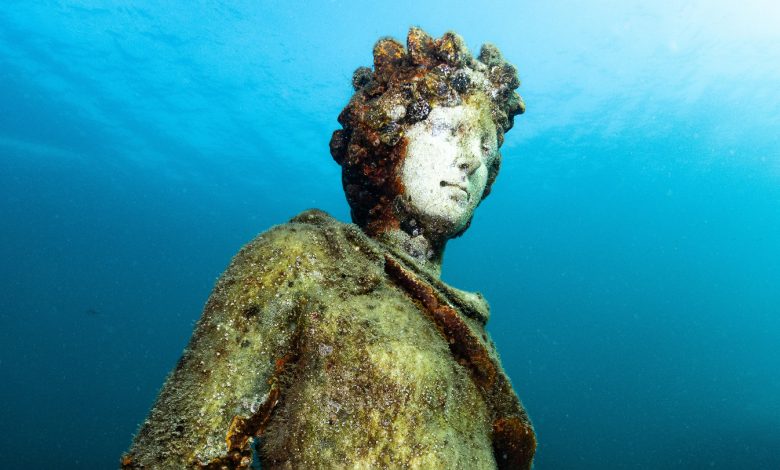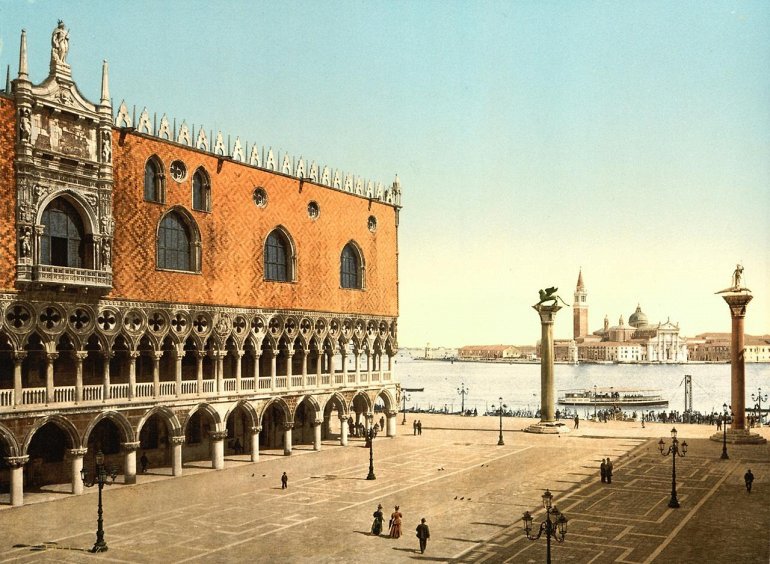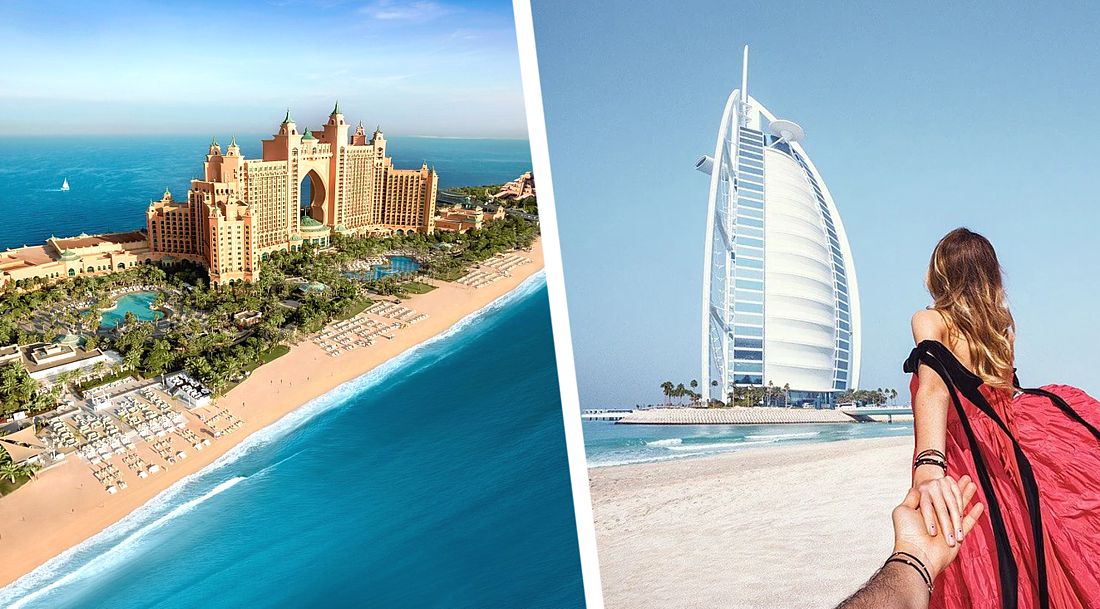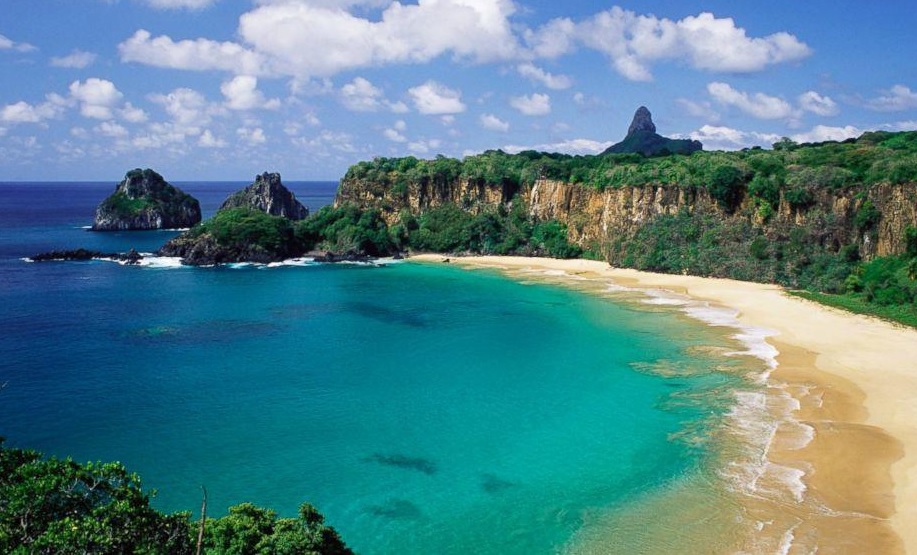

For centuries, humanity has dreamed of finding the mythical Atlantis, but the sea depths are filled with the ruins of very real cities. Some of them once destroyed thousands of people under their rubble, while others were abandoned and forgotten. Architectural monuments of ancient civilizations and empires slumber beneath a thick layer of silt. Many have been explored and protected by UNESCO, but most have been waiting for their moment to be discovered for millennia.
1. Pavlopetri

Photo: Aerial-motion/Shutterstock/FOTODOM
It is believed that the city suffered from numerous earthquakes, which resulted in the flooding.
Country: Greece.
When it sank: around 1000 BC
Pavlopetri is unique in that it is the first underwater city discovered by archaeologists. It is extremely ancient—artifacts discovered indicate that the first settlement on this site dates back to the Aegean civilization, dating back to 3000–1000 BC. Over an area of 30,000 square meters, scientists have discovered the remains of residential and religious buildings, as well as a cemetery.
It is believed that the city suffered from numerous earthquakes, which resulted in it being flooded.
The underwater ruins are located at a depth of 3-4 meters in Laconia, southern Greece, near the town of Pavlopetri, which gives the underwater city its name. The ancient name of the city, as well as its dominant form of government, remain unknown. Scholars believe it was a major port center.
According to Dr. John Henderson, head of underwater exploration, it is “one of the few places in the world where you can literally swim along the sunken streets of an ancient city and peer curiously into one of the tombs.”
2. Dvaraka

Photo: ANDREAS SOLARO/AFP/East News
Ancient legends describe Dwarka as a very rich and unusually beautiful capital
Country: India.
When it sank: According to legend, around 3000 BC (the exact date is unknown). However, the most likely date is around 1500 BC.
Dwarka is a city of legend. References to this city as the capital of the god Krishna appear in the Puranas and the Mahabharata, the ancient Indian epic. Legend has it that Dwarka was built in a single night at the behest of Krishna. According to legend, the capital lasted for approximately 10,000 years, and seven days after Krishna’s death, the city was swallowed by the sea.
Ancient legends describe Dvaraka as a very wealthy and extraordinarily beautiful capital: “…the city was built in the middle of the sea: it had straight roads, wide streets and alleys, as well as wonderful gardens and parks where… wishing trees grew. The city had many palaces and gates… Almost all the palaces were unusually tall.”
It was discovered almost by accident. In the late 1990s, Indian archaeologists were exploring the intertidal zone near Banapur and discovered the remains of a stone wall, barely visible at sea. When the scientists continued their search with underwater equipment, they discovered the ruins of an ancient city at depths ranging from 7 to 40 meters: walls, buildings, temples, paved roads, sculptures, and coins.
Initially, research was suspended due to a lack of funding, but in 2025, a team of scientists from the Archaeological Survey of India resumed their exploration of the underwater depths. Archaeologists believe that Dwarka may have been submerged several times, as described in ancient texts.
3. Heraklion-Thonis

Photo: East News
The underwater city was named after one of the artifacts – a slab on which it was written that it should be erected in “Herakleion-Thonis”
Country: Ancient Egypt.
Period of submersion: around the 2nd century BC – 8th century AD (the process was gradual).
Heraklion-Thonis is renowned for its numerous historical discoveries. In this underwater city, located at a depth of 50 meters in Abu Qir Bay, where the Nile flows into the Mediterranean Sea, household items, jewelry, ruins of palaces and temples, and ancient statues have been found beneath a layer of sand. Furthermore, the wrecks of 64 Egyptian ships remain 6 kilometers offshore. According to underwater archaeologist Franck Goddio, studying all the underwater artifacts could take up to 200 years! Most of the finds have been preserved in good condition, despite being submerged for 2,000 years.
The underwater city was named after one of the artifacts—a slab inscribed with the idea that it should be built in “Herakleion-Thonis.” The city owes its dual name to its rich Greco-Egyptian history. Heracleion is the Greek name: according to Herodotus, the mythological heroine Helen and her lover Paris fled to Heracleion to escape the righteous wrath of her husband, the Spartan king Menelaus. The Roman part of the story is notable for the fact that Cleopatra was crowned in the city of Thonis, as the Egyptians called it.
One of the most popular versions of the city’s disappearance under water is an earthquake that led to a tsunami.
4. Samabah

Photo: Vitalis Arnoldus/Shutterstock/FOTODOM
Samabah is included in the tourist route to the main Mayan cities in Guatemala.
Country: Guatemala.
Period of inundation: around 250 AD
The city of Samabaj rests at the depths of Lake Atitlán, surrounded by three volcanoes. The lake is considered sacred—according to legend, the first Maya emerged from it. At a depth of 30 meters, traces of several buildings of varying sizes and an ancient temple with a preserved grand staircase were discovered. The submerged structures date to the period before the Maya empire reached its peak—250 CE. Furthermore, ceramics, including altars and incense burners, as well as several stelae decorated with carvings, were found. This confirms the scientists’ hypothesis that the city was a Mayan religious center.
The pottery discovered indicates that residents fled their homes in a hurry, leaving all their belongings behind. Modern research suggests that the city was submerged not by a volcanic eruption, but by a significant rise in the lake’s water level, possibly caused by climate change or tectonic activity.
Samabah was discovered by archaeologist and diver Roberto Samayoa during a recreational dive. The first part of the name, “sam,” comes from the discoverer’s surname, and the second, “abah,” means “stone” in Mayan. Samabah is included in the tourist route to the main Mayan cities of Guatemala.
5. Baiyi

Photo: ANDREAS SOLARO/AFP/East News
The city was famous for its hot springs, which contributed to its prosperity as an ancient “spa resort”
Country: Ancient Rome.
When it sank: The submersion occurred gradually, first in the 3rd–4th centuries CE and then, much more significantly, in the 7th–8th centuries.
The ancient Roman city of Baiae, located in the province of Campania on the shores of the Gulf of Baiae, is also a favorite destination for divers. The underwater archaeological park “Baia” was built on the site of the discovered city. Part of the park, including Baiae Castle and the half-submerged Temple of Serapis, is located on dry land, while the rest is at depths ranging from 3 meters to 24 meters. Divers can “walk” through the underwater streets, visit Nero’s villa, and even enter the Roman baths, built around 1,500 years ago.
The city was famous for its hot springs, which contributed to its prosperity as an ancient spa resort. At the time, the baths were prized not only for their therapeutic properties but also as a fun way to spend time; political clubs even held meetings there. And the city’s residents were experts in entertainment—the spa town spent its life in feasts and pleasures. Seneca even called the city “an inn of all vices.”
It has been established that once rich and beautiful, Baiae was plundered by the Saracens and after that, abandoned and deserted, gradually sank under water as a result of volcanic activity.
6. Port Royal

Photo: Gerald Robert Fischer/Shutterstock/FOTODOM
Most of the ruins of Port Royal are underwater at depths of up to 15 m.
Country: Jamaica.
When it sank: 1692.
The sunken city of Port Royal hasn’t revealed ancient palaces or statues of ancient deities to scholars—it’s of interest for other reasons. Founded by the Spanish in the 16th century, Port Royal was a center of trade in the Caribbean, but after passing from the Spanish to the English, it became a “pirate Babylon.” The gangs that took over the city turned it into a den of taverns and brothels. The slave trade flourished here. Therefore, the earthquake of 1692, which almost completely flooded the city of thousands, was considered by contemporaries to be divine punishment for debauchery.
In 1959 and 1966, American archaeologists organized expeditions to the sunken port, but the treasures left behind by the raids were of purely historical interest. Scientists discovered food and drink remains that allowed them to determine what people ate and drank at the time. The daily life of the islanders can also be inferred from the discovery of tobacco leaves, smoking pipes, a rum still, historical documents, maps, and silver jewelry.
Most of Port Royal’s ruins lie underwater at depths of up to 15 meters. The underwater city is listed as a UNESCO World Heritage Site. The waters around Port Royal are protected, and the ruins of houses and ships from the 16th and 17th centuries are a popular attraction for divers and snorkelers.
A museum and exhibition complex already operates here, combining elements of a shipbuilding museum and an underwater aquarium with exhibits of local flora and fauna. This allows tourists not only to immerse themselves in the history of piracy and maritime traditions but also to explore underwater archaeological finds. The shore also features cafes, shops, and a pier for glass-bottomed excursion boats.
7. Chichen

Photo: blue-sea.cz/Shutterstock/FOTODOM
The construction of the city of Shicheng dates back to 621 AD, but an even older city, Hecheng, founded in 208 AD, was discovered in the lake.
Country: China.
When it went under water: 1959.
The uniqueness of the underwater city of Shicheng (translated as “Lion City”) lies in the fact that it owes its existence not to nature, but to man. Chinese authorities built a hydroelectric power station, for which they decided to flood 377 villages and 27 towns, and relocate 300,000 people to other cities.
Surprisingly, while the ancient city of Shicheng stood above ground, no one showed any interest in it. It is the creation of the artificial Qingdao Lake that has earned it the reputation of being one of the most beautiful underwater cities. Furthermore, the pristine freshwater lake’s waters have provided a favorable environment for preserving historical materials. Scientists believe that relics are better preserved underwater, so they are not raised to the surface.
The city of Shicheng dates back to 621 CE, but an even older city, Hecheng, founded in 208 CE, was discovered in the same lake. It is now known that the lake conceals approximately three more cities, but exploring the underwater depths is a very expensive and time-consuming process. However, the Chinese Ministry of Tourism has built a diving center at the site where Shicheng and Hecheng were discovered, allowing anyone to see these ancient ruins with their own eyes.





